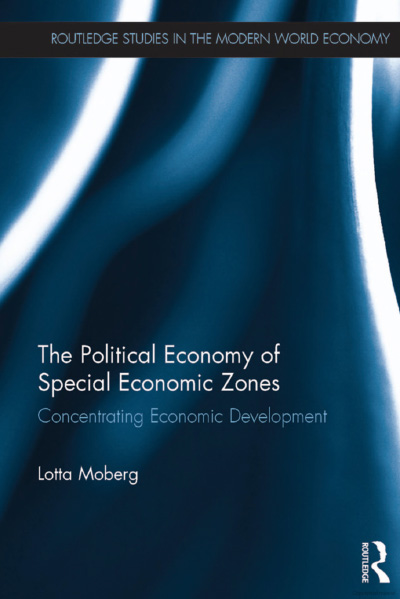The Representational Theory of Capital summarizes itself in its final sentence as “a call for the return of the old fiscal religion.” More than that, though, it is a return to the old-time Classical religion of early Austrian capital theory. While more recent capital theorists in the Austrian tradition—Friedrich Hayek, Ludwig Lachmann, Peter Lewin—do make frequent appearances, the strongest direct influences on the book are Carl Menger and Eugen von Böhm-Bawerk, both of whose important works on capital theory were written in the nineteenth century. This nineteenth century flavor—the theology undergirding the old-time religion—is the source of both the book’s main strengths, and its weaknesses.
Zelmanovitz’s representational theory of capital divides the world into two “sides”: the “real” side consisting of goods and services, and the “abstract” side consisting of property claims over those goods, including financial instruments. The division is different from, and claims more than, the more common division of convenience between the “real” and “financial” sides of the economy, i.e., between rights to a particular good and rights to a generic revenue stream. In the representational theory, all property claims are understood as a “representation” of some real good or service and fall with financial instruments on the abstract side. Financial instruments, for their part—including money—must correspond to some actually existing good or service, else they constitute “false rights,” i.e., claims that cannot be made good on except in merely nominal terms, if at all.
Like the correspondence theory of language, the representational approach to capital theory rests on a commonsense distinction between sign and signified. Money, in particular, is “just a veil covering the actual economy” (p. 99). But for the same reasons that most philosophers no longer hold to the correspondence theory, neither have most economists kept the representational faith. Zelmanovitz is not unaware of the difficulties that a representational theory faces. He nods to the subjectivity of the concept of capital, the fact that a capital good is only so by virtue of the fact that it fits into an entrepreneur’s productive plans, in an extended summary of Lachmann’s Capital and Its Structure (1956). Nevertheless, the book does not address, or even acknowledge, the implication of this argument, that the subjectivity of capital completely abolishes the distinction between the real and abstract “sides” of the economy. The representation is the thing itself.
A property right is the valuable and alienable right to prevent others from taking certain actions, often—but not always—with respect to a physical object. I do not expect Zelmanovitz would disagree with this definition so far as it goes. But, it is a further step to concretize this definition with a model of “things” that exist apart from their “representation” in a ledger or a balance sheet, or to insist that property claims be “backed” by real “things.” The book does not neglect intangible capital goods such as intellectual property or brand name equity, but to consider these as definite things which are “part of the intellectual world” (p. 141) is a curiously concrete ontology of these sorts of rights. In fact, whether part of the physical or intellectual “worlds,” the balance sheet representation of such “things,” informed by the exclusions the legal system is willing to enforce, constructively constitutes a capital good. This is apparent enough for intangible capital goods which have no existence (physical or otherwise) apart from the rights that constitute them, but even in the case of discrete physical goods, many different independently alienable rights over different aspects of the same good can coexist (for example in a rental arrangement), and some rights—most notably financial instruments—are generic claims to a revenue stream, and do not have to correspond to any particular physical or intangible good at all. All this is obscured by the book’s decision to treat all property rights as fee simple and indivisible (p. 164).
The primary virtue of the book, and of the representational approach more broadly, is its focus on real wealth creation. As it emphasizes repeatedly, it matters a great deal for economic performance whether the source of a given revenue stream is in negative-, zero-, or positive-sum activity. The low growth of pre-modern empires is no puzzle in light of what Max Weber in Economy and Society (1956) dubbed “political capitalism,” a situation where the revenue streams underlying the bulk of financial capital were generated through zero-sum means like tax farming. And the book does disavow the cruder manifestations of a backing approach, such as 100% reserve fundamentalism. Nevertheless, the approach does lead in some strange directions, for example a number of suggestions (pp. 18, 135, 188) raising the specter of the long-put-to-rest Real Bills Doctrine, where the money supply is supposed to be self-regulating on the condition that banks limit their money creation to short-term productive projects and only short-term productive projects (on which see Lawrence White. 2015. “Free Banking Theory Versus the Real Bills Doctrine.” Cato At Liberty).
Chapter 9 is emblematic of the relationship between the book’s nineteenth century ethos and the later critics of that ethos whom the book cites favorably. In this short chapter, Zelmanovitz reminds us of Lachmann’s caution that capital cannot be aggregated into a meaningful single quantity, and then immediately draws three graphs using a quantity of capital, including a derivation of the “natural rate of interest” from it. Essentially, Zelmanovitz wants it both ways: the consistent and nuanced subjectivism of Lachmann, and the straightforward mechanistic morality play of Böhm-Bawerk and the Classical economists. But if we have learned anything from the three less-than-fruitful capital controversies over the past 150 years, it is that we cannot have it both ways. It is not simply that we do not have enough information (as Chapter 4 emphasizes); it is not simply that the border between capital and consumer goods is fluid (as Chapter 5 usefully reminds us); it is that there is no natural unit by which capital goods can be summed if we insist on thinking of them as heterogeneous “real” goods rather than in monetary terms. It is not a practical difficulty, but a conceptual one. These more recent authors cited favorably by Zelmanovitz are not simply an additional layer of nuance on the basic Böhm-Bawerk story; they invalidate the Böhm-Bawerk story at precisely those parts where it relies most heavily on the Classical economists, a point that has been well-accepted—even among orthodox Austrians—since the 1930s (see my 2020. “Unmixing the Metaphors of Austrian Capital Theory.” Review of Austrian Economics).
This difficulty casts doubt on the validity of the “model” (which is really more a taxonomy) built out in the middle chapters, where it is ambiguous whether we are dealing with heterogeneous capital goods (in which case we have incommensurable sets, not sums), or with capital value (in which case there is no “real” side opposed to the “abstract” side). This ambiguity can be seen most clearly at the outset of Chapter 5, which places res nullius (things which are owned by no one, presumably a set of “real” goods which remain “unrepresented” in terms of property rights) alongside capital goods which are “social constructs” (and thus have no existence independent of the property right that constitutes them) as components of “everything that exists in the world.”
But perhaps the finer points of capital theory do not matter so much if the goal is a political parable rather than economic theory as such. The book does claim to develop an ontology of capital, but there are suggestions in the first two chapters and in the conclusion that the former is the foremost goal. The first chapter in particular attempts to ground capital theory in the normative value of economic growth with a series of polemics against various interventionists, polemics that do not argue for, so much as assert, liberal individualist values.
From this perspective, one can appreciate the polemical value of the representational approach. It seems to be a common feeling among some Austrians that free institutions can only be defended on the basis of what, following Lachmann, I have in the past called Ricardianism: an economic methodology conducted in terms of real goods, rather than in value terms (see my 2019. “Against Savings: A Suggested Exposition of the Markets for Money and Credit.” Working Paper). With a frictionless and moneyless barter equilibrium held up as a benchmark of efficiency, money not only is a veil, but should be a veil, and any real effects of money are looked on with deep suspicion.
This representational ethos was wielded to great effect by the Classical economists against mercantilism. Its canonical parables—such as John Stewart Mill’s corn economy—continue to be used as a prophylactic against perennial policy errors like inflationary finance and other confusions of money with wealth. Though Zelmanovitz is by no means a fundamentalist in this respect (e.g., the insightful discussion of the Bank of England on p. 37 acknowledges that the creation of liquidity is productive insofar as it reduces transaction costs), there is still a palpable fear that a loss of this faith—partaking of the Tree of the Knowledge of Aggregate Demand—is what has opened the floodgates to the ill-advised interventions of the era of mass democracy, and that a Great Awakening is necessary to redeem us to the innocence of sound finance.
But if The Representational Theory of Capital sees itself as a voice in the wilderness calling for a return to the old-time fiscal religion, one important quality of any religion is that it is only meaningful if it is pursued for its own sake. Whatever side benefits it might have, if religion is pursued instrumentally, for the sake of those benefits, it is fragile and decadent. The scientific enterprise is the same. Good economics, we may be confident, will lead to good policy and to a flourishing civilization. But if economic methodology is not pursued for its own sake, if it is subordinated to a particular policy vision—however noble that policy vision might be!—it is not economics. Ultimately, the representational approach—despite its intuitive appeal and its polemical value—has been superseded for strong theoretical reasons, not simply because of interventionist fashions or ideological preferences (as insinuated on p. 45). I happen to agree that there is value in the old-time fiscal religion. But an effective apologetics cannot rely on a theology from which the profession has already long been disenchanted.
| Other Independent Review articles by Cameron Harwick | |
| Spring 2016 | Cryptocurrency and the Problem of Intermediation |



















